For The Sake of Maine’s Lakes
Spring 2021 Volume 50
Table of Contents

Maine's lakes continue to be the standard for freshwater lakes in the U.S. (unfortunately, with a few exceptions), and they continue to be recognized as superb places to recreate and live; and are recognized as economic drivers for Maine’s economy. As an organization, Maine Lakes continues to mature and expand its relevancy to hundreds of members, advocates and volunteers committed to preserving our lake heritage for subsequent generations.
This year, we are launching the first comprehensive revision of our flagship program, LakeSmart. Many dozens of volunteers, staff, state agency staff, and lake scientists have spent months reconfiguring the standards and practices of the original LakeSmart Program. Labeled “LakeSmart 2.0”, decades of learning have been brought together for this newer and more impactful, all-volunteer educational and community based social-marketing program. The number of properties around the state participating in the LakeSmart program continues to increase, and we expect that to continue in the next few years, producing a tipping point when LakeSmart participation becomes a community norm across the state (for more information, see below #6 - LakeSmart 2.0, It's Finally Here).
For the second year and in reaction to COVID-19, our Conference Committee has produced a series of webinars held over the past few months. Once again, we’ve enjoyed a national audience, as well as excellent speakers from both Maine and from away. The culmination of the Maine Lakes webinar series is its Annual Meeting and related keynote speaker, this year held on June 19th. Thank you to all who have participated in the webinars. And thank you for making time to attend the Annual Meeting. I know you will be happy with the individuals nominated to our Board. It is a diverse and great group.
Please support your Lake Associations; they provide the backbone of our efforts to keep Maine Lakes strong and robust while keeping Maine lakes clear and healthy.
Sincerely,
Dick Tinsman, President
2. Message from the executive director

You might be wondering why you’re not getting this newsletter in your mailbox. Or why it’s not in nice PDF that you can print out and read at your leisure on your dock. Apologies for the change in format, but 2021 is all about doing the best one can do…and for this edition, this is the best that I can do! I love putting together our biannual newsletters. I love soliciting writers, thinking of topics and themes, editing pieces, writing content, finding great photos, and most recently, putting all the pieces together in what I hope is a thoughtful and appealing layout. Losing that last step with this issue is a big disappointment for me. But it’s also what had to be done.
This has been an exciting year at Maine Lakes despite the challenges of COVID. But I have learned that for every exciting development, there is a huge investment in behind-the-scenes time and energy. We have an amazing new LakeSmart program manager on staff, who brings incredible expertise and skill to the program (see #5 below). But the time and energy to advertise, hire and interview was significant. We have some great new projects and programming to launch in 2021 (see #12, #13 and #14 below) but the time and energy it took to write those grants and generate enough support for them to come to fruition was significant. We moved our office to Yarmouth in order to reduce rents and commutes. We are sad to say goodbye to our colleagues at 7 Lakes Alliance and Belgrade Lakes Association, and it took us weeks to recover from the Herculean effort of packing up 10-plus years of records and files, but we are happy to be in a new space that is closer to staff homes. It’s all great stuff, and it’s exciting to plan for growth and new summer staff positions and new opportunities on the horizon. But time for all this stuff has been significant.
Up until last week, I thought I could still pull off a printed newsletter in time for our annual meeting. But then a fall last week and a newly sprained wrist eliminated my ability to use a mouse. So that might be a blessing in disguise, as it gave me the push I needed to get the newsletter out in this new (and temporary) form. The fall newsletter will be back “in print” for you all to read at your leisure. But in the meantime, please read on to learn more about the exciting developments at Maine Lakes.
Thanks to all our members who make so much of “the exciting stuff” happen. We couldn’t do it without you.
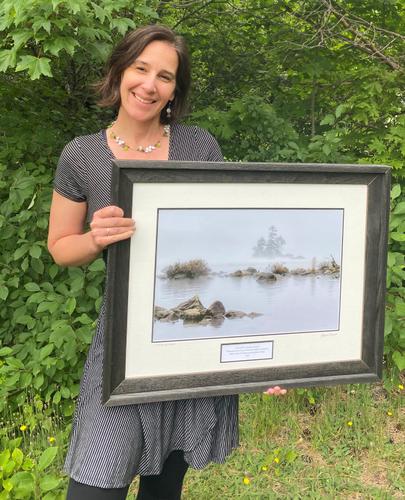
Maine Lakes would like to wish a fond farewell to long-time Board Member and Past President, Jennifer Jespersen. Jen came onto the board of Maine Congress of Lake Associations (CoLA) in 2012 and served for nearly a decade in several critical positions. For many years she chaired both the Education and Conference Committees and played a key role in the merger with Maine Lakes Conservancy Institute (MLCI) that eventually resulted in the Maine Lakes Society.
Jen is a long-time water quality professional who is a recognized leader in the field of watershed planning and watershed restoration. She briefly interrupted her service to Maine Lakes with a maternity leave that resulted not only in the birth of her second child but the birth of her own business, Ecological Instincts. Jen came back onto the board and served two terms as President before retiring from Maine Lakes.
She will be missed but almost all of us will be interacting with Jen as she has remained on our Advisory Board, and her business has continued to grow. She is also very active doing Nonpoint Source Surveys and Watershed Management Plans for watershed groups all over the state, including with many Maine Lakes members. Maine Lakes’ loss is Maine’s lakes gain! We wish Jen all the best.
By Peter Kallin, Past President
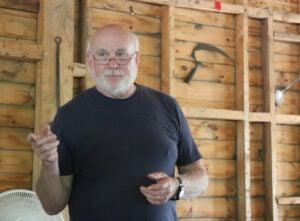
In the briefest of terms, Rob was a great guy. He was quiet but was always ready to step forward as a volunteer when something needed to be done. His actions always spoke louder than his words, and he led through personal example.
Rob joined the board of Maine CoLA at our 40th Annual Conference, held at Colby College in 2010 and served for ten years. I was the chair of the Nominating Committee and, as I placed the proposed board slate into nomination, I asked if there were any additional nominations from the floor. I pointed out that we were particularly interested in finding someone with local town government experience and someone who had accounting experience. I was delighted when Rob stood up and nominated himself. From my work at Belgrade Regional Conservation Alliance (BRCA, now 7-Lakes Alliance), I knew that Rob was the President of the East Pond Association as well as the First Selectman of Smithfield. I also knew he was a graduate of Bowdoin College, a U.S. Coast Guard veteran, a retired Maine State Employee (Regional Administrator and Financial Contract Manager) and had his own weather station. We had found our man!
Over the next ten years, he served Maine CoLA and the Maine Lakes Society in many capacities, including a long tenure as Treasurer. He was always a delight to have at board meetings as he usually showed up with homemade bread and often coffee that he had roasted himself. Rob also continued to serve as President of the East Pond Association, coordinated their courtesy boat inspection (CBI) program that included not only paid CBIs but he and his wife Diane as volunteer CBIs, who inspired others in the association to donate their time as well, saving the association money and expanding CBI program capacity. Rob also coordinated and volunteered as a Section 319 Nonpoint Source Survey team member to help carry out the East Pond Watershed Survey, leading to the East Pond Management Plan, and eventually working with other board members at East Pond and BRCA to raise the matching funds for a million-dollar alum treatment that has prevented nuisance algae blooms for at least three years.
Through it all, Rob was also an active volunteer for Avian Haven, a wild bird rehabilitation center in Freedom, picking up injured loons and raptors all over the state and delivering them to the Haven (usually in a big box on the back of his motorcycle) and helping with bird rehabilitation. His favorite time was when they returned the rehabilitated bird to the wild, which didn’t happen all the time but made it all worthwhile when it did.
We were recently saddened to learn that he entered the hospital on Christmas Day and passed away two weeks later from COVID-19 complications. Rob will be sorely missed but fondly remembered by all who knew him, especially his fellow board members and staff at Maine Lakes. Maine’s lakes, and especially East Pond, are better off thanks to his efforts and are part of his lasting legacy. We thank him for his service.
(Morning Sentinel photo by Meg Robbins)
5. Q&A with mary wicklund, lakesmart program manager

Maine Lakes is excited to welcome Mary Wicklund to our staff as the new LakeSmart Program Manager. Starting with us in May of this year, Mary brings a wealth of knowledge and experience to the position, having worked on lake protection programs for Portland Water District and the Department of Environmental Protection. Most recently, Mary was at Cumberland County Cooperative Extension where she was a horticulture specialist. From native plants to lakeside buffers to implementing best management practices, we are excited to have Mary lead the LakeSmart program in the years to come! To learn more about Mary, read her answers below!
What is your favorite lake activity?
Tough call – Kayaking by myself, or canoeing with my son .
What is your favorite Maine lake and why?
Eagle Lake. My son and I have a tradition of camping at Acadia – we have done so every summer since he was born. He learned to ride his bike on the carriage trails, and we have an annual tradition of starting at Eagle Lake, and biking up to have a popover with tea/lemonade.
What attracted you to the Maine Lakes organization?
The people! There is such passion with those who love the lakes in Maine. Helping folks see that each one of us can make a difference to protect them into the future is so rewarding.
If you could be any animal, what would you be and why?
Tough question! A monarch butterfly. For we all go through changes in our lives, but they can also be our greatest opportunity for growth.
Are there any lakes on your visit “bucket list”?
Any of the lakes in Glacier National Park.
What message about lake conservation would you most like to pass on to members and friends?
Just like NPS is a lot of little contributions, each one of us can make a difference in protecting our lakes. Every little action, however seemingly small, when added together can make a huge impact!
“Never underestimate the power of a small group of committed people to change the world. In fact, it is the only thing that ever has.” ~ Margaret Mead.
6. lakesmart 2.0 - It's finally here!
By Brooke MacDonald, Former LakeSmart Manager

As many of you know, LakeSmart was created by the Maine Department of Environmental Protection (MDEP) in 2003 to address declining lake water quality due to urban/suburban landscaping and development by evaluating lakeside properties and giving LakeSmart Awards to homeowners whose property met certain water quality protection standards. When Maine Lakes took over the program in 2012, staff continued with those established standards but also started thinking about ways to make them more protective. While LakeSmart standards were purposely created to balance what could be achievable by homeowners and generate widespread buy-in and participation with what might ultimately be the most desirable in terms of pollution reduction, it became increasingly clear that those standards needed to be revisited.
More intense storms, warmer air, rising water temperatures, increased droughts, decreased winter ice cover, and on-going development pressure prompted a thorough reevaluation of standards over the last 18 months. The need to balance standards remains. LakeSmart standards must be high enough so that they continue to make a difference for water quality – both now and in the decades to come – but they must also remain achievable for homeowners. How should LakeSmart standards change to be both more protective of water quality yet still be within reach of most homeowners?
To help answer this question, Maine Lakes embarked on LakeSmart 2.0, an effort that incorporated a thorough review of scientific literature, interviews and surveys with lake scientists, meetings with experienced LakeSmart Coordinators and Evaluators, many LakeSmart Committee meetings and many days of discussion with Maine Lakes staff and board. The study, which was generously funded by the Davis Conservation Fund was a massive effort that spanned more than two years. We are launching LakeSmart 2.0 this season with an updated evaluation form, new training for both experienced and new evaluators, new outreach pieces to help lake associations bring new landowners on board (see below), a new award sign, and even a new program manager (see below). A new training manual for evaluators will be out this fall.
While the rollout of LakeSmart 2.0 has had a few bumps (change is hard and there are many issues being raised by LakeSmart evaluators that we are addressing in the weeks ahead), we are so excited to have all of our hard work finally rolled out in an improved set of standards that we know will help us assure that LakeSmart properties today will be protective of lake water quality long into the future.
What does LakeSmart 2.0 look like? A few highlights:
- Added an assessment of how robust a lakeside buffer is as a measurement of buffer quality.
- Added an assessment of slope, a feature identified by experts as important to consider when looking at the depth and quality of lakeside buffers.
- Eliminated subjective measures and focused on signs of erosion from driveways, parking areas and lawns.
- Eliminated most self-reports that relied on homeowners, so that almost every standard can be seen and measured by an experienced evaluator.
Interested in learning more about LakeSmart? Email lakesmart@lakes.me, or visit lakes.me/lakesmart FMI.
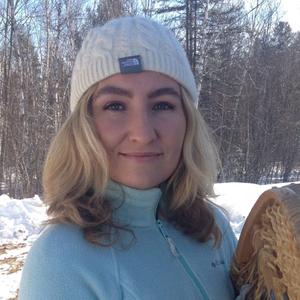
We said goodbye to Brooke in March of this year, as she moved on to new work adventures. She was a great asset to the LakeSmart program during a tumultuous year that included both a global pandemic and the revision of long-established LakeSmart standards. She adapted LakeSmart workshops to a fully virtual format with ease, and made connections with so many LakeSmart coordinators and evaluators despite never meeting most of them in person. She poured her heart and soul into LakeSmart 2.0, which was released this spring, and did an amazing job. We thank her for her time with Maine Lakes, and wish her the best at Acadia National Park (where she’s a ranger this summer) and beyond!
8. Why "the nature gap" matters to maine lakes
By Mary Ann McGarry
In case you missed “The Nature Gap: Racial and Economic Disparities In The Outdoors,” the Maine Lakes Wednesday Webinar from May 5th, 2021, we encourage you to watch the recording it in its entiretity by clicking here. As a member of the Maine Lakes Environmental Justice Committee, here is a perspective on why the presentation is important for all of us who care about Maine lakes. As the program description states - the nature gap is real and wide, and in the Northeast, communities of color are nine times more likely to be deprived of access to nature, which should be a guaranteed right for all. With COVID, everyone came to recognize that the “safest/healthiest” places to be are outside. All of us should work to ensure just, inclusive, and effective opportunities to benefit from outdoor, inspirational experiences.
Two dynamic presenters, Sahir Doshi from the Center for American Progress and Jessica Godinez with the Hispanic Access Foundation, offer their diverse perspectives from their professional and personal experiences working on behalf of communities of color. In the webinar, they speak about the findings from the data in The Nature Gap report for about 30 minutes and then answer questions. They have excellent summary slides about the origin of racial and economic inequalities, address why it matters and what we can do.
They emphasize a key message about the history of economic and racial segregation that led to inequalities regarding access to nature in the U.S. They believe choices were made and choices can be unmade. They offer steps and policy recommendations for organizations like Maine Lakes to be part of the solution. They support the mission to ensure outdoor access and equity through community engagement. Doshi and Godinez articulately encourage us to help break down cultural and other kinds of barriers that prevent the public from accessing nature through the following:
- Creating space for diverse representation on boards, even if it means giving up our own positions;
- Advocating co-management with indigenous groups of public spaces, effective international examples that have had positive results can serve as models;
- Working as allies to elevate voices of communities disproportionally disenfranchised, using positions of privilege and power to advocate for marginalized populations;
- Understanding what we know and don’t know and approaching solutions with an attitude of vulnerability, being prepared that we might be wrong and make mistakes regarding environmental justice issues;
- Leaning into being uncomfortable in starting conversations about the nature gap;
- Recognizing communities of color have always been involved in serving as caretakers, but the spotlight or narrative has never been on them; and,
- Being authentic about our intentions, starting with exploring our own unconscious biases about marginalized populations.
The authors encourage us to become aware so that structural and other kinds of change can happen from the bottom up and top down in organizations. The Environmental Justice Committee at Maine Lakes continues to look for ways to improve access and equity around our mission of lake protection. Please stay tuned for more on this in future issues of our newsletters.
Click here to read the full Nature Gap report which includes and relates to water/lake access issues. https://www.americanprogress.org/issues/green/reports/2020/07/21/487787/the-nature-gap/.
About the Author: Mary Ann McGary serves on the Maine Lakes’ Environmental Justice Committee. She co-owns a camp on Hopkins Pond, in Mariaville, Maine and just retired as the Endowed Abbot Professor of Environmental Studies from Plymouth State University, Plymouth, N.H. Before moving to NH in 2004, McGarry worked for the University of Maine System, the Maine Department of Conservation, and the Maine Lakes Conservancy Institute.
9. the lake library at lakes.me/library
With our new logo and new look, we are working hard to update and re-release many older outreach pieces, as well as to create new and needed pieces for our members and friends. Check them all out at our new Lake Library at lakes.me/library. If you have an idea for an outreach piece, please email us at info@lakes.me. Many of our pieces were great ideas that came from (and in some cases were even written by) members. In the meantime, read on for short descriptions and links to the new pieces. You are free to print any of these materials yourselves, or email info@lakes.me if you would like materials printed for you. Please note, too, that there is space on each piece to add a label with local lake association contact information. Let us know if you’d like help formatting labels to fit this space. Hope you enjoy!
Lakeside Living: Caring For Your Septic Tank: A new piece written by Roy Lambert, Maine Lakes and Lakes Environmental Association board member, that tells you everything you need to know about septic system care and maintenance and hopefully helps new lake dwellers understand how these systems work.
Lakers Dozen: Created by former Maine Lakes Executive Director Maggie Shannon, this updated one pager (front and back) has 13 tips for homeowners and lake users who want to help protect their lake.
Be LakeSmart: An update of the LakeSmart introductory brochure with new graphics and updated language, this is the perfect piece to share with a new neighbor or with your lake association board if you are considering starting a LakeSmart program on your lake.
Protect Your Pond: An update of this very popular brochure written by new Maine Lakes board member (and long-standing Pushaw Lake Association member) Doug Kavanaugh, this brochure has a poster of good native plants to choose for your lakeside buffer as well as planting directions and additional resources. A companion webpage with the same information as the brochure can be found HERE.
Common Shrubs of Central Maine Shorelines: An update of a booklet written by Sue Gawler and her son Jack Bouchard, this 18-page booklet describes some of the easier to grow shrubs for your lakeside buffer strip.
10. Love your lake photo contest
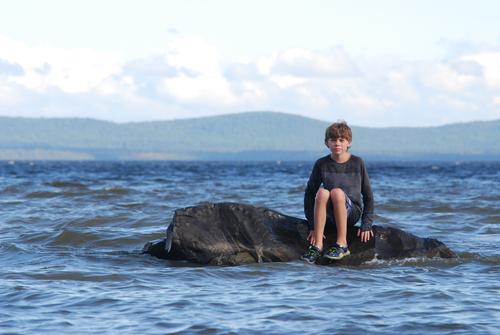
What’s your favorite lake and why is it special to you? Send a photo of you doing what you love on your favorite lake (or lakes) along with a brief explanation of what makes it special. Each submission will enter you into drawings for new Maine Lakes “swag,” including tees, boat stickers, trucker hats and insulated stainless steel water bottles. We’ll share the photos (and the winners!) on social media this coming summer, and the favorites will be featured in upcoming newsletters. For examples, visit lakes.me/love. And if you would like to submit a photo, please email to info@lakes.me.
11. Meet our new board members
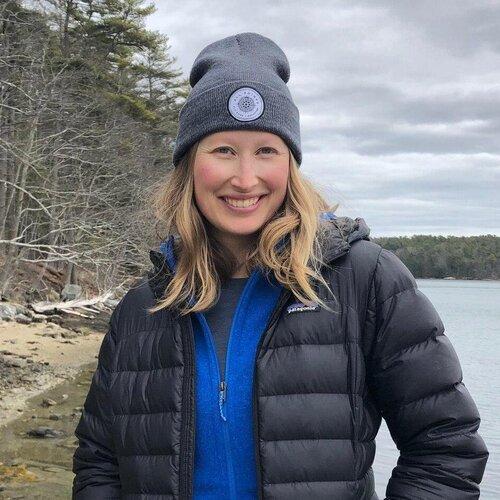
Stacey Detwiler

Doug Kavanaugh
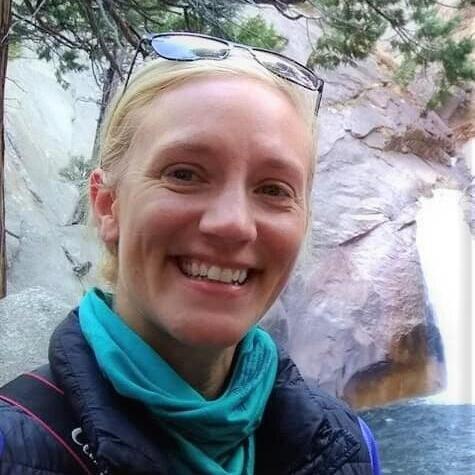
Toni Pied
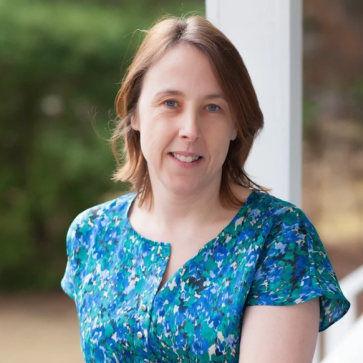
Laura Wilson

We are excited to be launching the next issue of the Lake Book this summer. It has a new, smaller format but remains packed with helpful information for any lake dweller. Check our homepage or our FaceBook page for the date it is released. We are still looking for business sponsors to print copies (about $15 each). If you have a business, or know of someone who has a business and would like to advertise on the back cover of the book, please let us know at info@lakes.me. We would love to work with you to get copies to your community!
13. Volunteer opportunity: build, float and monitor loon rafts
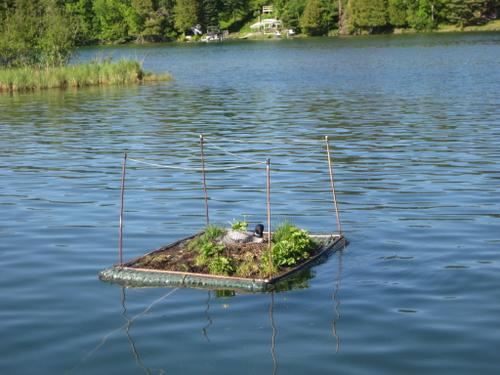
Maine Lakes is excited to be partnering with Maine Audubon and Lakes Environmental Association on a five-year project to improve loon nesting habitat on Maine’s lakes. Starting this summer, we’ll be looking for lake associations and community organizations on lakes where loons have consistently failed to produce young to see if placing a loon nesting platform might help. We have funds to help associations and groups build and launch platforms, and have support to help train volunteers to monitor newly launched rafts throughout the summer. We will be piloting a couple of sites next summer where ropes and signs, we hope, will ward off boat traffic and reduce disturbance. If successful, expect the opportunity to add signs and/or ropes to other nesting sites on other lakes.
The project will also provide materials for continued outreach about the dangers of lead sinkers. We will be looking for tackle shops interested in participating in a lead buy-back voucher program, and for community groups to help distribute lead-free tackle. If you are interested in learning more, email info@lakes.me.
(Photo Credit: Trish and Jim Bogenrief, Deer Lake Association)
14. Please join us at our 2022 Maine Lakes Conference!
Save the date! Our 2022 Maine Lakes Conference is scheduled for June 18. After two years of missing out on meeting with other like-minded lake people, we very much look forward to seeing everyone again in person at our 52nd Annual Conference. We will keep you posted on place and time, as that is determined, as well as day-of programming and other events associated with the conference. Hope to see you there!
Thank you for ALL that you do to protect our precious lakes and ponds. We will forever be fans and followers of your work. Have a fabulous summer!
The Board and Staff of Maine Lakes